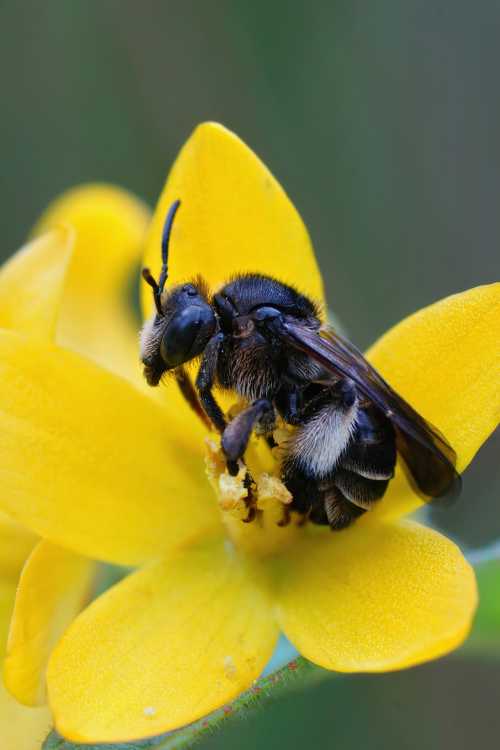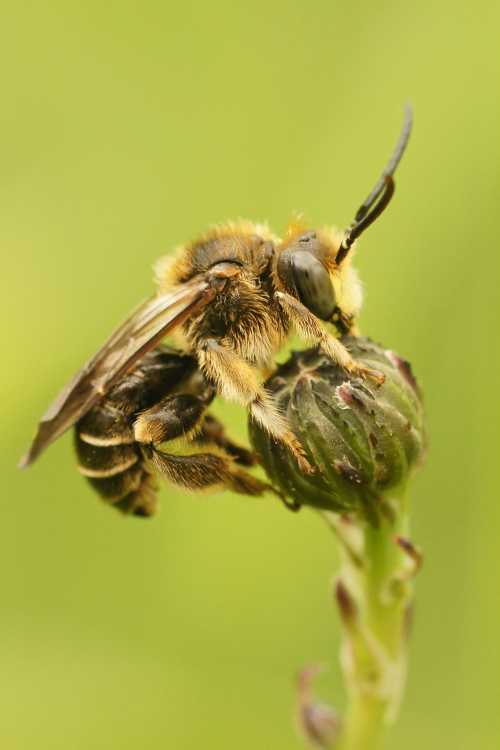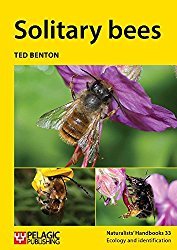Yellow Loosestrife Bee, Macropis Europaea
The Yellow Loosestrife Bee, Macropis Europaea, is a medium-sized bee, and is the only Macropis species native to Britain.
About The Yellow Loosestrife Bee, Macropis Europaea
Macropis are oil-collecting species of medium size. They belong in the Melittidae bee family.
Yellow Loosestrife Bees measure about 7-8mm in length, with males and females being similar in size.
 The Yellow Loosestrife Bee, Macropis Europaea female
The Yellow Loosestrife Bee, Macropis Europaea femaleFemales are blackish with conspicuous pollen brush on the rear legs which has white hairs on the tibia and black hairs on the basitarsi1.
They have white tufts of hair on the front of the face.
 The Yellow Loosestrife Bee, Macropis Europaea male
The Yellow Loosestrife Bee, Macropis Europaea maleMales are paler, with blondish-brown hairs and no pollen brush.
The Yellow Loosestrife Bee may be seen in Britain from late June to early September.
Floral preferences
This species has a strong association with the perennial wildflower, Yellow Loosestrife (Lysimachia vulgaris) from which it gathers pollen and floral oils.
However, other flowers are visited for nectar, such as thistles, bird's-foot-trefoils and brambles.
Habitat
The requirement of Macropis Europaea for Yellow Loosestrife pollen and oils means the species can be found in habitats favoured by these plants, typically damp or boggy soils.
Nests
Nests occur in the ground, either singly or in small aggregations.
Given that Yellow Loosestrife may be found in wet areas and those prone to flooding, Macropis Europaea use floral oils they gather to create a waterproof barrier to protect the nest cells.
References
1.Field Guide to Bees Of Great Britain And Ireland by Steven Falk, Bloomsbury 2015.
If you found this page helpful or interesting, I'd really be grateful if you would share it with others - if not this page, perhaps another, such as Gardening For Bees.
Thank you so much :) .
